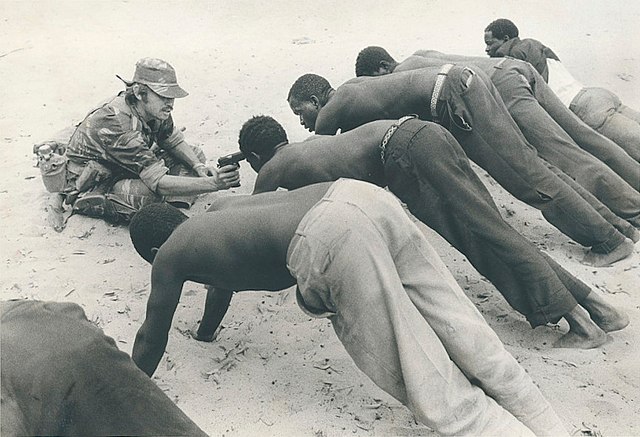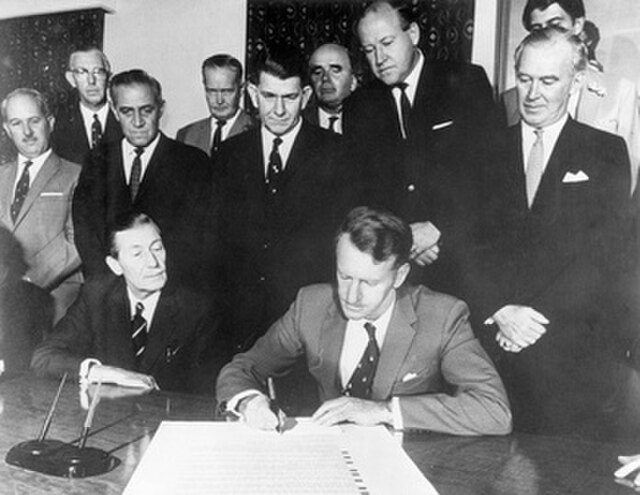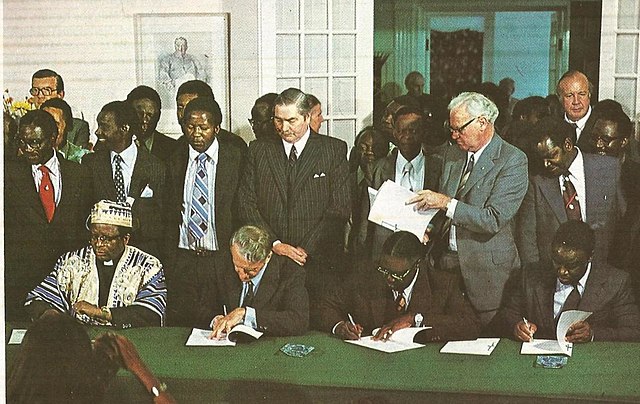The Rhodesian Bush War, also called the Second Chimurenga as well as the Zimbabwean War of Liberation, was a civil conflict from July 1964 to December 1979 in the unrecognised country of Rhodesia.
White civilians; a woman and two young children killed at Elim Mission in eastern Rhodesia by ZANLA guerrillas in the 1978 Vumba massacre.
A Rhodesian soldier questioning villagers near the border of Botswana in 1977
A Leopard APC, mine-protected vehicle, designed and built in Rhodesia during the late 1970s and based on a Volkswagen engine. This example is displayed in the Imperial War Museum North, Manchester, UK
Member of the Commonwealth Monitoring Force supervising a ZIPRA assembly point.
Rhodesia, officially from 1970 the Republic of Rhodesia, was an unrecognised state in Southern Africa from 1965 to 1979, equivalent in territory to modern Zimbabwe. Rhodesia was the de facto successor state to the British colony of Southern Rhodesia, which had been self-governing since achieving responsible government in 1923. A landlocked nation, Rhodesia was bordered by Botswana to the southwest, Mozambique to the east, South Africa to the south, and Zambia to the northwest. From 1965 to 1979, Rhodesia was one of two independent states on the African continent governed by a white minority of European descent and culture, the other being South Africa.
Ian Smith signing the Unilateral Declaration of Independence
Rhodesian soldier interrogating villagers in late 1977 at gunpoint. This photograph would become one of the most enduring images of the Bush War.
Signing of the Rhodesian Internal Settlement (from left: Bishop Abel Muzorewa, Ian Smith, Jeremiah Chirau and Ndabaningi Sithole)
Troops of the Rhodesian Armoured Corps in 1979







